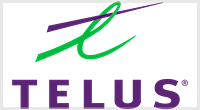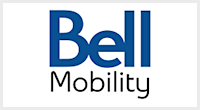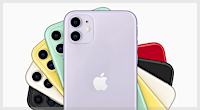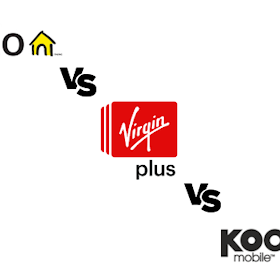 The other day I decided to take the plunge and install Windows 8 on my personal computer at home. Having been almost exclusively a Windows user since first I held a mouse, I was not looking forward to the arduous task of upgrading yet again. I was, however, very keen to see how Microsoft had spiced things up with its newest OS update.
The other day I decided to take the plunge and install Windows 8 on my personal computer at home. Having been almost exclusively a Windows user since first I held a mouse, I was not looking forward to the arduous task of upgrading yet again. I was, however, very keen to see how Microsoft had spiced things up with its newest OS update.
Despite being a tech enthusiast, I’ve never been particularly amazing at computers and, while I would put my knowledge a little above the average user, I’ve always found installing a new Windows OS to be a difficult and frustrating process. I’ve never been good at coding, keep a pretty untidy desktop, have only a passing knowledge of setting up networks and tend to spend most of my at-home computer time either surfing the web, playing games or watching videos.
In short I’d say I’m a fairly standard user with an only slightly above average knowledge of PC and Windows operations.
This is important to note, as my initial impressions of any OS are bound to be based on my past experience and prior skillset. This is not meant to be a full Windows 8 review, nor is it an in-depth critique of Microsoft’s latest OS. Rather, it’s a few scribbled-down thoughts of a new user who has only spent a few of hours on Windows 8.
 Getting Ready to Install
Getting Ready to Install
For anyone interested, prior to the upgrade I was running a 64 bit OEM copy of Win7. If this just sounds like words to you then don’t worry, it pretty much means that most personal Win7 users should have a similar experience.
The Microsoft store was well laid out for anyone looking for a Windows 8 upgrade. I found the payment & download section quite quickly and was pleased to find that for a limited time Windows 8 Pro is available for just $39.99, as I had been expecting to get the vanilla version for that price.
As a long-time Windows user I have to say that buying a new version for just $40 seemed wrong. It was like I was somehow breaking the law, or making some kind of terrible ignorant mistake in purchasing a discounted version that was only intended for special customers. Or maybe I was only buying half the OS and I would have to come back later and pay extra for the rest.
Of course, in part this is last part is true, as Windows 8 Media Centre is not included in the standard Windows 8 price. This has so far turned out to be a complete non-issue for me, as I didn’t use any of the standard Windows media programs before and all of my old third-party media players still work after the upgrade.
I was pleased to find that I could pay with either my credit card or via PayPal. I chose PayPal, as I’ve been a fan of the service for some years now.
Despite Microsoft’s specific outlining of the fact that existing Windows 7 users would be able to transfer apps, documents and settings from Win7 to Windows 8, I still thought it wise to back-up some of my more precious material before doing anything. All in all this took about an hour and a half and was, ultimately, entirely unnecessary.
 Installing Windows 8
Installing Windows 8
Once again I will remind our readers that anyone with a different version of Windows to me will/may have a different experience.
Windows 8 is very specifically geared towards being an upgrade to Windows 7. Users with previous version will still get a few perks, depending on the version, but may encounter more problems during and after installation.
The first thing I was required to do was enter my personal details. This is actually an important step and I suggest that users provide accurate information. Many folk have the instinct to provide a fake name, email address and phone number when filling in online forms. This is not the time to do this.
Both the email and mobile phone number you provide are important for initial setup of Windows 8, as this is where activation codes are sent. Your receipt and product code are also sent via email. Furthermore, in future Windows will be focusing on being a more overarching service with strong social media ties, so a fake name may end up being confusing down the track.
Just before installation starts Win8 will check your computer for any programs that are incompatible with the upgrade. My computer found 11, all of which I almost never use or had forgotten that I own. Humorously enough iCloud was included on that list.
Despite there being 11 incompatible programs I was only required by Microsoft to uninstall one of them. This was easy enough, as an uninstall button was provided for me without my having to change screens. I simply clicked it, allowed the computer to reboot (part of the uninstall for this program) and then clicked “Continue” when given the option to keep going or start the whole Windows 8 pre-install process all over again.
This is when I started to get impressed. Not only did Windows 8 keep all of my documents, pictures, apps and even my Windows settings through the install, but I didn’t even have to stop using my computer during the initial phase.
I browsed the web, watched some videos and even played a few games, all completely without incident. The only problem I ran in to at this phase of the setup was that my computer stopped communicating with the Home Group, meaning that I was limited to media stored on my PC and couldn’t connect to the media device that I keep in my lounge room.
After a little over an hour and a half the install entered a phase where my computer had to restart several times. The setup process had warned me about this so it wasn’t a big deal. I grabbed a book and kicked back on my computer chair, watching the progress bar tick slowly towards 100%. What I didn’t realise at this point is that there were still many more progress bars to go between myself and my shiny new user experience.
Once the automatic reboot phase started I was unable to access my computer for around another two hours. Long waits have customarily been a part of my Windows install experience in the past so I didn’t find this too much of a bother. Everything went smoothly and, after a lengthy and uneventful wait, my new Windows 8 OS was ready for a test run.
 Using Windows 8 for the First Time
Using Windows 8 for the First Time
I’ll say it now: I’m still not sure if I’m a fan of Windows 8. It’s not because of how “different” it is, as has been the complaint of many users. I can certainly see how the newness of the interface could be frustrating, but as a tech writer and reviewer I’m used to new interfaces and am aware that it can take some time to fully appreciate a new operating system.
My problems arose mostly from little bits and pieces of the interface that still seemed half-baked or untested. However, there was also plenty of new stuff I appreciated, hence my indecision regarding whether or not I like it.
Being a long-time Windows user I immediately noticed the lack of Start Menu button in the lower left corner of my main screen (I use a two display setup). I was also interested to see that the task bar now extends across both screens, rather than only the primary display.
After only a couple of seconds of scooting my cursor around I discovered that both the top right and bottom right corners of my main display activated the Start Menu replacement. Mousing over either corner brings a pop-out menu with options to jump to the new Modern UI (previously Metro) Start Screen, Search, Settings, Devices and Share.
The placement of these buttons felt a little off, as I had to mouse down or up to the corner, then mouse back to the middle of the edge of the screen where they were located. This was especially frustrating when trying to do it on my secondary display (that I keep on the left), as it was easy to accidentally jump the cursor from one display to another while mousing from the corner towards the on-screen buttons.
I can see myself getting used to this in time, but it just doesn’t feel like a step up from the old start menu. Rather, the increased mouse movement makes it feel like a step back. I can certainly see the point for a touch screen device, as well spaced-out buttons are good for fingers, but why not have a slightly different version for a touch display and a mouse display? It also seemed odd that Microsoft would opt for putting it on the right, rather than the left where the old Start Menu button was. It sounds like a small thing, but retraining your hand to go right instead of left after around 20 years of Windows use does nothing but add to the frustration of adopting a new UI.
Start Screen and Desktop Segregation
 The new Start Screen itself is also a mixed-bag. Activated from either the left-hand pop-out or by hitting the Windows key on your keyboard, it’s quite a pleasant looking menu. The Live Tiles work well visually with a large display and the Start Screen itself wasn't as central to the overall UI as reviews and videos had led me to believe. Instead of replacing your desktop, the Start Screen is more of a quick-access hub for all of your most popular stuff.
The new Start Screen itself is also a mixed-bag. Activated from either the left-hand pop-out or by hitting the Windows key on your keyboard, it’s quite a pleasant looking menu. The Live Tiles work well visually with a large display and the Start Screen itself wasn't as central to the overall UI as reviews and videos had led me to believe. Instead of replacing your desktop, the Start Screen is more of a quick-access hub for all of your most popular stuff.
I was surprised that I couldn’t find any Facebook or Twitter apps in the Microsoft Store. I couldn’t really find any apps that I use regularly on my Android, meaning that I just ended up throwing my regular programs on there. I already had all of these on my classic desktop and task bar, so it seems like just another way of doing the same thing, if you catch my drift. The major difference being that I can put pretty much anything on my desktop, but I could only put items found via the Start Screen on the Start Screen.
Pictures, videos and apps all found by navigating the Start Screen could be easily pinned to the main page. But what I couldn’t do was locate a file or folder via the desktop and have the same option. This to me seemed like it would be the easiest way of doing things and I couldn’t think of a single reason for its omission.
One problem I was faced with initially that highlights desktop and Start Screen segregation was that my screens were reversed. That is, when going from my right-hand screen to the left-hand screen I would have to run my cursor off of the right-hand side of my display. I decided that instead of just switching them around physically on my desk I would see how easy it was to change the Windows settings.
During this affair the whole Modern UI part of Windows 8 became so confusing that it just felt tacked-on and useless in many ways once I figured out the answer.
 From the Start Screen I accessed Settings and, after a bit of poking around, I found the Personalization screen. This is where various colors and display themes can be chosen to give your computer a new look. However, try as I might I couldn’t switch my displays around.
From the Start Screen I accessed Settings and, after a bit of poking around, I found the Personalization screen. This is where various colors and display themes can be chosen to give your computer a new look. However, try as I might I couldn’t switch my displays around.
After searching around in this menu for a while I spotted the inconspicuous “Change PC Settings” button at the bottom of the pop-out. It’s one of those things that’s right there in front of you, but because it’s slightly out of the way and doesn’t look like a button your eyes have a tendency to discount it. After looking through this new PC Settings area I still came up fruitless.
I did discover that mouse scroll doesn’t work in the PC Settings menu which I found very surprising. This is the kind of problem you get in beta versions or in completely new OSes. Despite Windows 8 being a new approach for Microsoft, there should be enough experience behind it to remember something as simple as mouse scroll.
I gave up on the PC Settings section and decided to go looking for my Display Settings via Windows Explorer, the way I used to get there. Unfortunately the start menu is gone and no “Computer” or “My Computer” shortcut was apparent.
I opted against using the search bar to search for “Display Settings” or “Control Panel” because I think that they should be easily located without having to search for their specific titles. After a bit of poking around I made the discovery that the left-hand pop-out menu for the classic desktop actually has different Settings options to the one inside the Start Screen. I’m trying to avoid calling this pointless or gob-smacking, but at this point it’s getting difficult.

From this pop-out I managed to eventually find the old control panel, which seems to have undergone little-to-no changes from the Windows 7 version. This shouldn't have been a relief, as Windows 8 is meant to be an upgrade, but I can tell you now that it was great to see the old Control Panel by this stage. I was able to manage everything I needed to do with display options.
By now Windows 8 as a whole had started to feel more like a beta than a finished product. Not only had I been forced to search around for what is a very simple settings menu, but I had to visit more than one settings hub before I found the correct one. So instead of having one place from which all my settings can be adjusted, I now have multiple.

Start Screen menu settings are generally accessed via the Settings accessed via the Start Screen and everything else is via Desktop. It sounds like it makes sense, but it doesn’t, not really.
The Start Screen UI is meant to play a big part in the new way of using Windows. It’s supposed to be useful and easy. But so far I hadn’t found a use for it beyond it being a prettier version of my desktop that didn’t quite work as well and disappeared whenever I clicked on my other display.
It’s almost as if Microsoft just kind of stuck the Start Screen menu on without any thought as to what function it would fulfil. It’s a nice, pretty interface that looks very appealing and I’m all for the aesthetic approach, but when you already have something that works so well it’s important to not sacrifice functionality or fluidity in order to achieve visual style.
I've also become more dubious about Microsoft's cross-platform support that will be coming with Xbox products and Windows Phone 8. If MSFT can't even get two parts of a singlee OS to work together smoothly, how is cross-device functionality going to work?
 Further Issues
Further Issues
The lack of an evident Computer/My Computer shouldn’t immediately register as a bad thing for anyone, nor did it for me, because I was ready for Windows 8 to sport a new interface. Learning new things can be frustrating at first, but often yield positive results further down the road. But I found that its removal took away one of the main ways I use a computer without providing me with a viable alternative.
Microsoft has sort-of replaced Windows Explorer (the old system where you browsed through different drives and folders) with an Applications screen. But, instead of actually replacing it, it’s just hidden it away for those who know how to find it.
I can see how the App screen would look great on a tablet, or even a laptop that doesn't have too much content on it. But on a PC with hundreds or even thousands of programs it simply becomes untenable. I haven't used a screenshot of my own PC's app screen to preserve a little privacy for myself, but you might try imagining what would happen to the image featured here once you more than quintupled the number of apps present.
Honestly, the new app screen was such a cluster of random programs and “apps”, only half of which had relevant icons, that I had trouble finding anything. Not only that, but many of my “apps” simply didn’t show up, even though I know they’re still in there because I found and activated them via Windows Explorer.

Luckily, my Windows 7 settings included a shortcut to Windows Explorer that I had pinned to the bottom taskbar before the upgrade. To my surprise, every layer Windows Explorer is just about exactly the same as ever. Why on earth I couldn’t find a native button to access it was and still is beyond me.
By the end of my first session I had simply moved my previously-pinned icon to the left side of the screen where the Start Menu button used to be. This meant that I pretty much started using it in lieu of the removed Start Menu feature. Once I adopted this method things actually became much easier for me. I could access movies, games and general files easily.
But this was not the way I was supposed to be doing things; something that seems to be an apt representation of my entire Windows 8 experience so far.
The whole point of Windows 8 is that it’s supposed to be even more user friendly than anything Microsoft has ever made. It’s supposed to compete with the intuitive simplicity of iOS and MacOSX while still offering the in-depth functionality of Windows. What I experienced in my first couple of hours was neither intuitive nor simple. The new functionalities felt hastily pasted on top of the old Windows interface while old features like Windows Explorer, while still present, could barely be accessed.
I’m still trying to figure out the point of the Applications section. Why can’t I simply go in to Windows Explorer, right-click on a file and then paste it to the start menu from there? Why are there two separate parts of my windows UI that don’t seem to interact with one another at all?
In Summary
I’ve probably only spent around four-to-six hours using Windows 8 and I have to say I’m a little underwhelmed. I don’t think this is a nail in the coffin situation for Microsoft and there are sure to be a bunch of patches coming my way that will hopefully fix those little glitches I've been complaining about.
It's worth noting that Microsoft itself doesn’t exactly have a sterling reputation for releasing a great Windows update every time around, either. Remember Windows Vista, ME, 2000 and 98 First Edition? Those were pretty terrible operating systems complete with total system failures and a range of other issues. Windows 8 is at least usable and has, so far, not crashed on me.
Of course, MSFT has a little more riding on Win8 than it has on past releases, but I think there’s a good chance most of these issues can be fixed in time, or at least in Windows 9.
For now I’d recommend that anyone upgrading to Windows 8 do their best to use it on a friend's or co-worker’s computer first. If you find it works for your general use then go ahead.
PC enthusiasts, especially those with Windows 7, should probably hold off until an update or two is thrown Windows 8’s way.
I love the new direction, I love the new look, I love the new pricing and upgrading was so easy I almost wrote an article just to praise it. But for now, at least for me, Windows 8 just isn’t quite there yet.
Related Articles
Find Better Phones and Plans
Hundreds of cell phone plans unpacked. All the facts. No surprises.








































